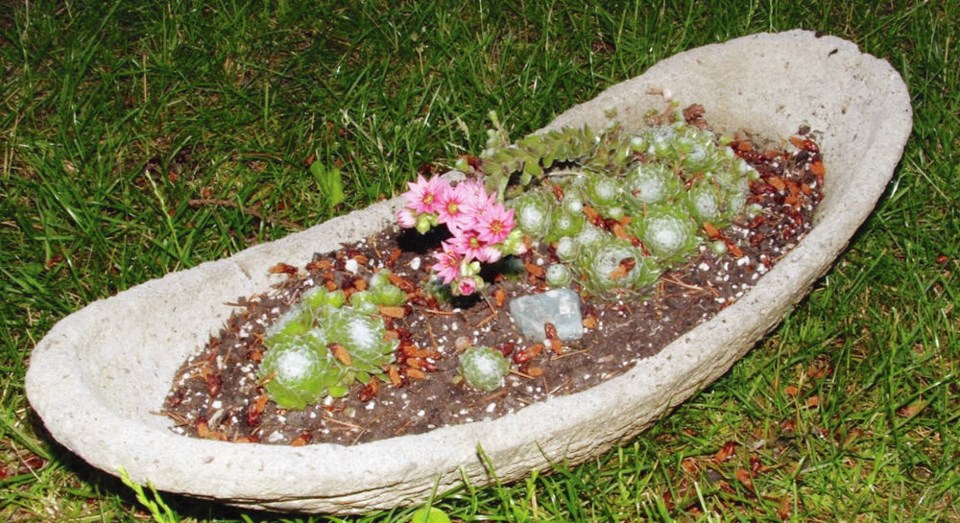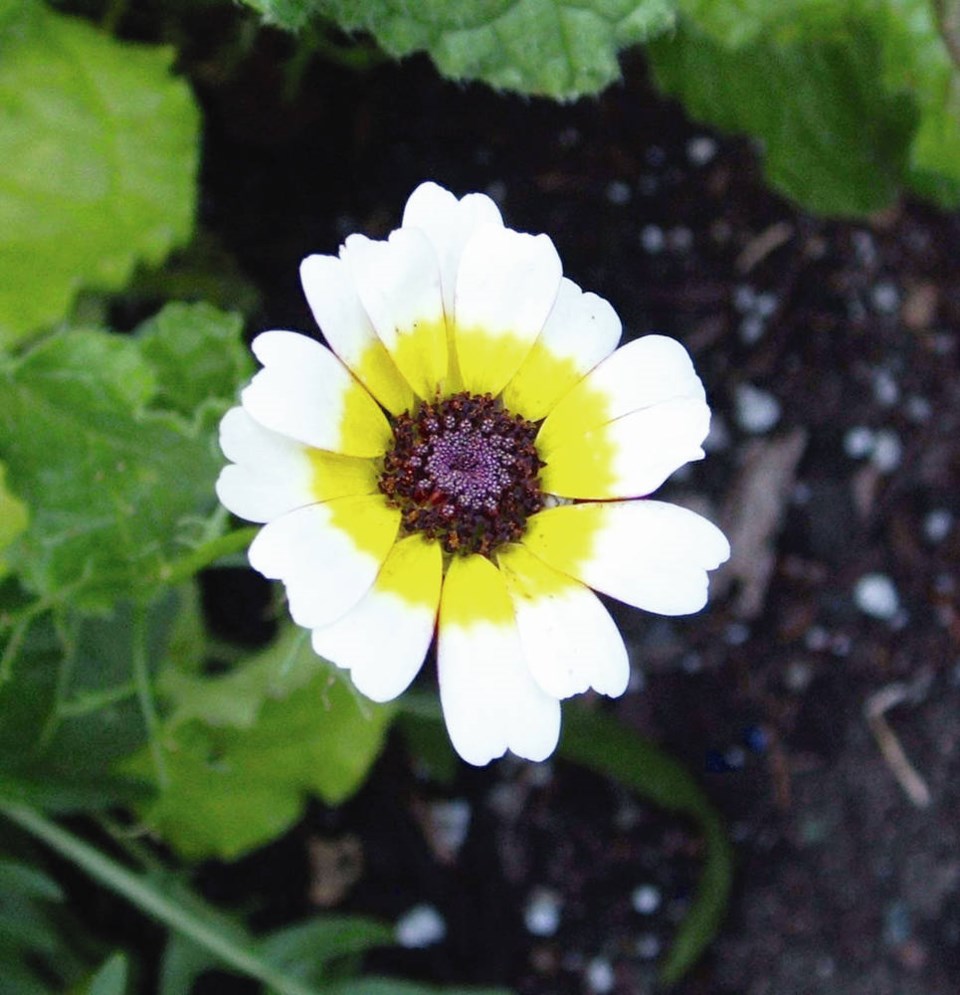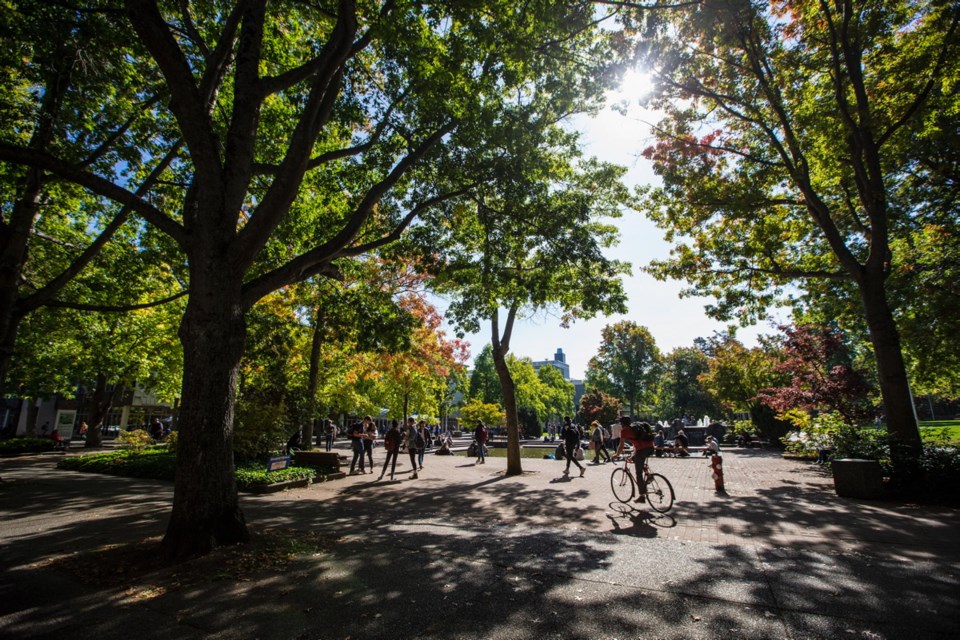Dried leaves fell like a heavy rain from a tree next to my office window. It was the first day of this month.
Granted, the tree is an Arbutus unedo (strawberry tree) and arbutus trees are known for their near-constant shedding. But this was extreme, and odd in the timing.
Next door, a huge native arbutus (Arbutus menziesii, madrone) looks almost completely dried out. Leaf littler lies thick on the lawn beneath it.
Friends tell me their maple trees suffered in the heat. Leaves dried and fell. Because the extreme heat arrived at the very beginning of summer, those trees should have time for re-leafing and a general recovery if temperatures remain moderated and the trees are adequately watered.
We will need trees and their leafy canopies to help cool and shelter us in heat waves of the future. Some municipalities on the Island must be struggling to keep street trees adequately watered. Anyone interested in the future of trees in their community might consider finding out whether residents’ help is welcomed or required in keeping trees adjacent to their homes watered. If such help is in order, a deep, slow soaking either early in the morning or late in the evening is most effective.
Bobbi’s succulents. As in many small towns on Vancouver Island, most stores and restaurants where I live maintain ornamental plantings in windowbox type planters attached to their front wall.

Something quite different, and timely for this hot summer, appeared in a planter at a popular coffee shop where I often see friends and familiar faces waiting in line for take-out or seated at outdoor tables enjoying a coffee, breakfast or lunch, or a sweet treat.
Lat month, one of the coffee shop’s frequent customers, and someone I know, filled the long planter with succulents from her garden — mainly sempervivums, with a few sedums and small, strategically positioned bits of driftwood.
The planting has been a hit. Staff and regular customers have named it the “fairy garden,” planted mysteriously by a (mostly) unknown and possibly ethereal entity.
The little garden is perfect for the times. As succulents, with characteristically fleshy leaves that store moisture efficiently, sempervivums and sedums are bound to become increasingly popular. As our normally benign summer weather heats up, gardeners will be seeking plants as water-thrifty and close to indestructible as possible while offering ornamental value and interest.
In climates hotter than ours, succulent plants are widely used in open gardens and containers. I can recall seeing photos of hanging baskets filled with succulents, in New Zealand.
Our island is no stranger to drought, but this year has been a particular challenge with unusually dry spring months followed by a June that failed to replenish ground moisture and ended with an unprecedented heat wave. And there’s no rain in sight.
If future years fail to return to the more moderate and kindly weather patterns of the past, gardeners will be carefully monitoring their plantings to determine which ones withstand dry conditions, and selecting future plantings with drought tolerance in mind
Nostalgia in bloom. Very early in the spring, I was delighted to come across a vast display of West Coast Seeds (WCS) in my local Buckerfield’s store. For a keen gardener though, this was a dangerous situation. It’s so easy to give in to the familiar “plant lust.”

Gathering my cloak of discipline about me, I picked out a few seeds I needed — lettuce, mini-broccoli — and crept cautiously closer to the flower seed section. There I met an old favourite, an annual I used to grow almost every year for its showy daisy flowers marked with circular bands of alternating colours.
I’d always known the plant as painted daisy (Chrysanthemum carinatum), but WCS lists it as Ismelia carinata. It is sometimes called tricolor daisy. I still think of it as an annual chrysanthemum.
This is a North African native that grows and blooms quickly from seed. My outdoor sowing produced mainly white, yellow and scarlet flowers, all with circular bands of different colours, on 45-cm stems. The bold colours attract bees, butterflies, and other pollinators.
Once a popular flower, painted daisy is listed now in only two of the catalogues I use — WCS and Lindenberg Seeds. I’ll be growing more of these flowers next year, in patches of mixed flowers around the vegetable garden, for colour and to plump up populations of pollinators and other beneficial insects in the garden.



